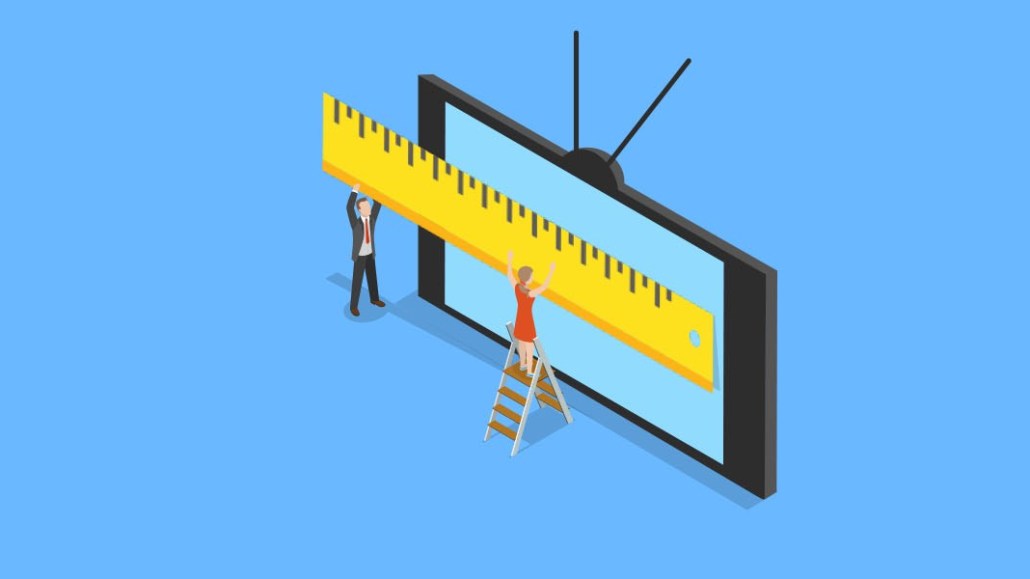Save 50% on a 3-month Digiday+ membership. Ends Dec 5.
‘Demonstrate how attention metrics drive long-term outcomes’: How The Telegraph proves its ads work

The Telegraph has beefed up its measurement capabilities to prove that its ads work, which — the publisher said — has been especially helpful during the last six months of restricted budgets and market volatility. The result: It’s won new business, repeat clients and grown campaign size.
The Telegraph first introduced Metrics that Matter — its efforts to measure ad success beyond clicks and impressions — in November last year. First, it takes 11 metrics that it deems qualify user attention across its ads, like dwell time, interaction and time in view. The publisher ties how these attention metrics correlate to brand uplift metrics like awareness, consideration and action. Now, it’s in the process of tying how brand uplift leads to advertiser commercial goals through its partnership with tech company Infosum. The average campaign price has increased by 24% year-on-year since launching Metrics that Matter, but it wouldn’t share specifics.
Over the last six months, as the ad market has been in relative turmoil due to the coronavirus crisis, brands have been under intense pressure to prove their marketing spend delivers returns. For certain categories and direct-to-consumer brands, that’s a lot easier to do than for high-ticket items or luxury brands, who faltered at advertising a $10,000 watch during lockdown.
After looking at 25 direct display and content-led ad campaigns that ran between March and June, The Telegraph found that the top five that performed highest in terms of attention metrics all scored high on driving higher action intent.
“There was a clear difference,” said Anthony Crocker, head of campaign innovation at The Telegraph. “We’ve been in the market talking about how attention drives brand metrics that then drive commercial metrics, but we had proof it was actually happening.” Crocker was unable to share specific revenue growth.
The Telegraph is not alone. Analytics company Brand Metrics works with more than 30 publishers and grew its client base by 30% during lockdown as more publishers prioritized proving how their campaigns move the revenue needle. Brand Metrics looked at brand awareness levels over 4,000 campaigns and found that in June, brand awareness was 10% higher than in March, (although it has since returned to March levels). The reason: Creating brand awareness is easier when there is less market competition and — as multiple studies and economists have shown — maintaining advertising during a downturn aids future investment in the brand.
In May, Brand Metrics’ data showed that action intent was on average 27% higher than March, suggesting that staying top of mind is useful for when people are ready to spend again after several months of pause.
Ad position: web_incontent_pos1
“We are now entering a period where advertising activity is arguably returning to pre-Corona levels,” said CEO of Brand Metrics, Anders Lithner. “Those brands which remained active in the quieter lockdown period are more top of mind and can now reap the benefits.”
Out of four brand lift metrics The Telegraph measures — awareness, consideration, preference and action intent — preference growth was the most significant, tripling in the period March and June compared with the three months before March.
The publisher attributed that to the increase in engagement. Crocker said readers were coming to the site three times a day and reading multiple articles. Like almost all publishers, The Telegraph witnessed a pandemic-induced renewed interest in, and respect for, quality news brands. As studies from Comscore and multiple others have shown, this creates a halo effect for the brands that advertise there.
Research studies notwithstanding, encouraging agencies and advertisers to spend with news brands has its problems in practice — blunt-force keyword ad blocking remains an issue — especially if it means getting agencies to adopt publisher-specific standards of measurement, further fragmenting an already wonky media buying process.
Connecting the dots between an ad and a purchase — using publisher and client first-party data through its Infosum partnership — will go some way in assuring wary marketers to release budgets, which has helped The Telegraph through some tough months. It was able to repay the U.K. government furlough money in June.
Ad position: web_incontent_pos2
And, tighter metrics has sped up its subscriptions strategy, said Crocker, which is the primary goal. Subscribers are 40% more likely to remember a brand’s ads than anonymous users, according to The Telegraph’s research (subscribers will naturally be its most attentive readers). In August, The Telegraph had 512,000 subscribers and 6.7 million registered users, on track to meet its goal of 10 million registrants and 1 million subscribers by 2023. This focus also led to cutting its branded content team of nearly 100 staffers in June.
“Prior to March, I’m not sure how seriously it was being taken [by marketers],” said Crocker. “Now agencies will say it’s between us and one other publisher and what are we going to do to prove we can deliver and optimize better? We want to make sure we demonstrate how attention metrics drive long-term outcomes.”
More in Media

What publishers are wishing for this holiday season: End AI scraping and determine AI-powered audience value
Publishers want a fair, structured, regulated AI environment and they also want to define what the next decade of audience metrics looks like.

Digiday+ Research Subscription Index 2025: Subscription strategies from Bloomberg, The New York Times, Vox and others
Digiday’s third annual Subscription Index examines and measures publishers’ subscription strategies to identify common approaches and key tactics among Bloomberg, The New York Times, Vox and others.

From lawsuits to lobbying: How publishers are fighting AI
We may be closing out 2025, but publishers aren’t retreating from the battle of AI search — some are escalating it, and they expect the fight to stretch deep into 2026.
Ad position: web_bfu





